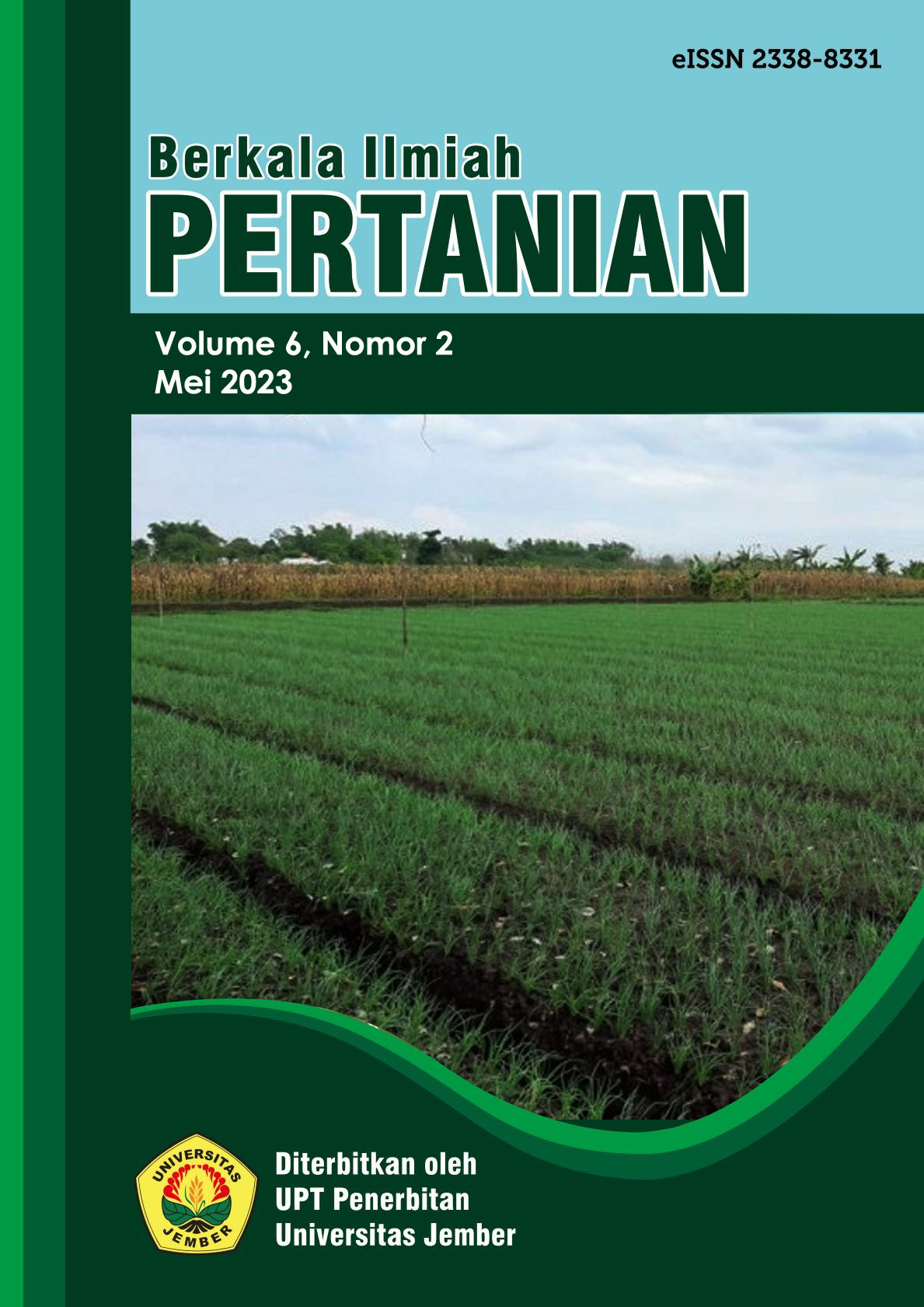Pengaruh Metode Pemupukan dan Berbagai Jenis Mulsa Terhadap Pertumbuhan dan Hasil Tanaman Stevia (Stevia Rebaudiana Bertoni) dengan Irigasi Tetes
DOI:
https://doi.org/10.19184/bip.v6i2.35464Abstract
This study wants to find the best fertilizing method and kind of mulch for better growth and yield of stevia. The research was conducted at October-February in PT. Daya Santosa Rekayasa, Karangploso, Malang at an altitude ±750 MAMSL. The research uses Split Plot Design using RBSL model with two factors and four replications. The first factor which is also used for the main plot is fertilizing method using fertigation (A1) and conventional method (A2). Second factor also uses as the subplot are black white plastic mulch (U1), rice straw mulch (U2), and without mulch (U3). Nondestructive variable was height of the plant and number of leaves. Destructive variable was observed in harvest time such as fresh weight of plant, fresh weight of yield, dry yield, root length, chlorophyll amount, and sucrose rate. The data will be tested using ANOVA and T-Test, if there is a significant difference, then will be processed again using Duncan Multiple Range Test (DMRT). The result showed that there is no significant interaction between the fertilizing methods and types of mulches in stevia. Fertigation and conventional method give no significant difference in growth or yield stevia but fertigation gives better result in every variable. Types of mulches show that black white plastic mulches give the best impact to height of the plant, number of leaves, fresh weight of plant, fresh weight of yield, dry yield, root length, and chlorophyll amount with fresh yield 11,4 gr each plant and also dry yield 2,27 gr.
Downloads
Downloads
Published
Issue
Section
License
Authors who publish with this journal agree to the following terms:
1.Authors retain copyright and grant the journal right of first publication with the work simultaneously licensed under a Creative Commons Attribution-NonCommercial 4.0 International License that allows others to share the work with an acknowledgement of the work's authorship and initial publication in this journal.
2.Authors are able to enter into separate, additional contractual arrangements for the non-exclusive distribution of the journal's published version of the work (e.g., post it to an institutional repository or publish it in a book), with an acknowledgement of its initial publication in this journal.
3.Authors are permitted and encouraged to post their work online (e.g., in institutional repositories or on their website) prior to and during the submission process, as it can lead to productive exchanges, as well as earlier and greater citation of published work (See The Effect of Open Access).




















